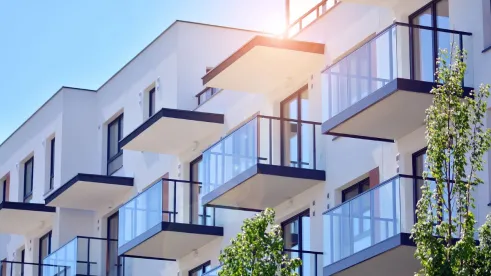This is what you need to know.
In response to the tragic balcony collapse that killed seven students in Berkeley in 2015, Governor Jerry Brown approved Senate Bill No. 721 on September 17, 2018. The bill, commonly referred to as the “Balcony Inspection Law”, went into effect on January 1, 2019 and the deadline for initial inspections is January 1, 2025. The Balcony Inspection Law amended Section 1954 of the Civil Code, and added Article 2.2 (commencing with Section 17973) to Chapter 5 of Part 1.5 of Division 13 of the Health and Safety Code, relating to building standards.
What does the Balcony Inspection Law require?
The Balcony Inspection Law requires an inspection of “exterior elevated elements” within all multi-family residential buildings in California that contain three (3) or more dwelling units. The initial inspections must be completed no later than January 1, 2025, with subsequent inspections to occur every six (6) years. Copies of all inspection reports must be retained by the building owner at least two inspection cycles, or twelve (12) years. Inspection reports are required to be provided to any future buyers of the building, and must be made available to jurisdictional officials upon request. The Balcony Inspection Law sets forth minimum inspection and repair requirements at the state level, but it is important to note that local jurisdictions may establish more stringent inspection requirements.
What qualifies as an “exterior elevated element”?
“Exterior elevated elements” that require inspection under the Balcony Inspection Law are defined as any structures that meet all of the criteria set forth below:
-
Balconies, decks, porches, stairways, walkways, and entry structures (including supports and railings) that extend beyond exterior walls of the building and include walking surfaces.
-
The walking surfaces are elevated more than six feet (6’) above ground level.
-
The exterior elevated elements rely in whole or in substantial part on wood or wood-based products for structural support or stability.
Many exterior elevated elements are constructed of concrete slabs, supported by wood floor joists, even if wood components are not immediately visible. If you are unsure whether your building fits within the scope of the Balcony Inspection Law, you should contact a professional qualified to perform inspections.
Who performs the inspections?
In order to satisfy the requirements of the Balcony Inspection Law, the building owner must hire one of the following to perform the inspection: a licensed architect; licensed civil or structural engineer; a building contractor holding any or all of the “A,” “B,” or “C-5” license classifications issued by the Contractors’ State License Board, with a minimum of five years’ experience; or an individual certified as a building inspector or building official from a recognized state, national, or international association, as determined by the local jurisdiction. The inspector cannot be employed by the local jurisdiction while performing the inspection.
What if the inspector identifies damage?
The inspector will determine whether the damage poses an immediate threat to the safety of the occupants. If an immediate safety risk is posed, owners are required to mitigate such risks immediately. Mitigation may include, without limitation, preventing occupant access to the affected areas, shoring, and conducting emergency repairs. If the damage does not pose a safety risk, the building owner has 120 days from receipt of the inspection report to apply for a permit to perform the repair work, and an additional 120 after approval of the permit to complete the necessary repairs. Extensions for repairs are subject to approval by local building departments. All repair and replacement work shall be performed by a qualified and licensed contractor in accordance with the Balcony Inspection Law, and cannot be performed by the licensed contractor that served as the inspector.
What are the penalties for non-compliance?
Under the Balcony Inspection Law, penalties of $100-$500 per day may be assessed for non-compliant buildings. If a civil fine or penalty has been assessed, the local jurisdiction also has the right to enforce a safety lien against the building. If a building owner refuses to pay the fines issued against them, the local jurisdiction can seek to satisfy the lien through foreclosure.
What if I am converting my apartment building to a condominium building?
Any multifamily building subject to the Balcony Inspection Law that is proposed for conversion to condominiums and sold to the public after January 1, 2019, must have the required inspection conducted prior to the first close of escrow of a separate interest in the condominium conversion project. The inspection report and written confirmation by the inspector that any recommended repairs or replacements have been completed must be submitted to, among others, the Department of Real Estate, and described in the Public Report issued by the Department of Real Estate for the condominium conversion project.
What about multi-family condominium buildings in common interest developments?
While Balcony Inspection Law addresses inspection requirements for owners of multi-family buildings, it does not apply to common interest developments. To establish the requirements for common interest developments, Governor Newsom signed into law Senate Bill No. 326 on August 30, 2019, adding Civil Code Section 5551 to the Davis Stirling Common Interest Development Act. The main difference between the Balcony Inspection Law and Section 5551 is that Section 5551 requires the board of an association of an attached condominium project to have exterior elevated elements inspected at least once ever nine (9) years rather than every six (6) years. However, the initial inspection of buildings for which a building permit application has been submitted on or after January 1, 2020, shall occur no later than six (6) years following the issuance of a certificate of occupancy.



 />i
/>i
